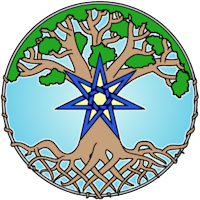While scheduling my upcoming Reiki classes, one of my prospective students asked a question I think I ought to answer for a wider audience. She wanted to know what to expect from her Reiki attunement, as she had heard that the experience could be intense. When answering, I started with the basics.
Learning Reiki has two parts: the theory, and the attunement. (Well, three parts if you include practice, which any good Reiki class will include.) The theory is pretty normal stuff, easy enough to read out of a book, but will probably take up the majority of the time in any class. It certainly does in mine. The attunement is what lets a student use the energy we call Reiki – or, depending on one’s perspective, lets it flow through the practitioner. The founder, Mikao Usui, believed Reiki exists in ambient form all over the universe, and that he was given the ability to harness it, and to let others harness it as well. You can read more about the story of Master Usui on my About Reiki page. Reiki is now usually taught as three levels.
The first level attunement is the one that connects students to the Reiki energy itself, and helps them become vessels, so that the energy will find them and respond to their intent to use it for healing. If you think about it in terms of vibrations, getting a first level Reiki attunement allows a student’s etheric bodies to process the Reiki energy and change slightly so that their vibrations are closer to the energy of the Reiki, allowing the student to work with the energy more easily.
When I am doing attunements, I first perform a short Reiki healing on my students, to make sure that their energy pathways are reasonably clear, and their energy centers are reasonably able to open. Then I connect them to the Reiki flowing through me, and I use the symbols to connect them to the Reiki source. I can do this because I’ve been attuned at the Master Level, and I have been given the ability to attune others and the correct symbols for that process. I make sure that the Reiki energy is firmly connected to the energy centers at the crown of the head, the third eye, and the heart. That is why it’s important that the energy pathways are clear – once the student is connected to the Reiki source, it will clear out any blockages in its path, and it will open up those energy centers. This is the part my student had heard about: the intensity of suddenly open energy centers, and the purging that comes with being connected to the Reiki source.
Although being connected to the source of Reiki won’t harm you, it can be uncomfortable at first. Many people haven’t ever had their energy centers fully open before, and they may find that they feel overwhelmed, or vulnerable. And as the Reiki clears out blockages in their bodies and lives, they may find themselves having physical, mental, or emotional symptoms to go along with that. Physical symptoms can include things like an upset stomach, headaches, mild aches and pains, or increased hunger. Mental symptoms can include difficulty focusing on mundane matters, or forgetfulness. Emotional symptoms can include irritability, anxiety, or being easily overwhelmed. For most students, the symptoms, if there are any, are very mild and last no longer than a week or two. Some people with major blockages in their lives, however, may find that practicing Reiki changes their goals and direction in life for the better, whether it helps them get out of a bad relationship, or out of a job that doesn’t fit!
All in all, though a Reiki attunement might change your life, you’ll be the one guiding the changes, and heading towards the best self you can be. It might be scary, but it won’t hurt you, and I’m available to my students during the process in case anyone has any questions or concerns – all my students will be given a variety of contact information and I’ll be sure to respond promptly!
